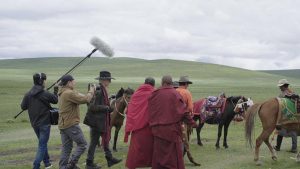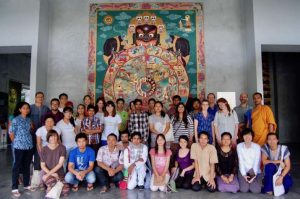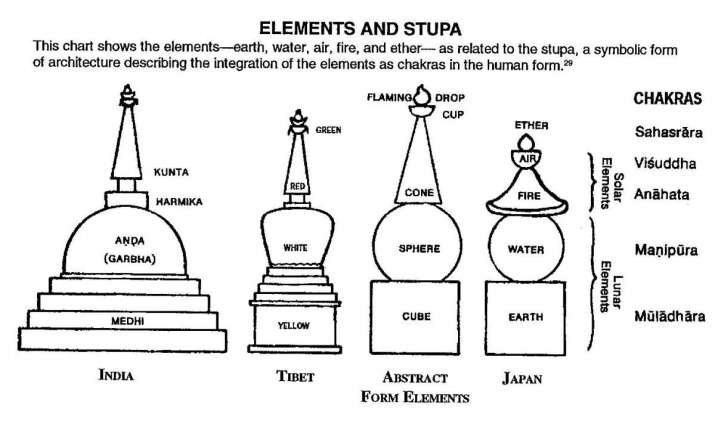
A large collection of miniature five-ringed stupas (Jpn: gorinto) have been discovered in wooden boxes at Entsu-ji, a Buddhist temple on Mount Koya, Japan, just outside of the city of Kyoto. The gorinto measure around nine centimeters high and three centimeters across, and are made from Japanese cedar and cypress. The discovery of such items is exceptionally rare. These small, portable objects would traditionally have been used during the interment or funeral and burial process of a loved one or a religious figure.
“In their capacity as items used to pray for blessings as part of interment, we can say they are incredibly precious historical materials,” a Mount Koya cultural property preservation society representative said. (The Mainichi)
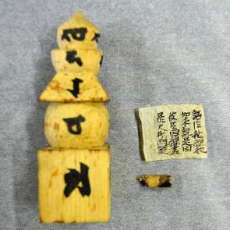
The Koyasan Reihokan Museum has one of the gorinto on display, showing Sanskrit characters written on each of the five sections, as well as the paper found stored within it containing a blessing or mantra.
According to inscirptions on one of the wooden boxes found, a total of 15,218 items were originally part of the stored collection. Another inscription dates the items to the seventh year of the Tenpo era (1830–44). Yet another inscription refers to 84,000 towers, this number being used often in Buddhism to simply represent an extremely large number.
The five levels of the towers represent the five elements: earth, water, fire, wind, and space. Gorinto can be found across Japan today, most often made of stone and serving as grave markers, funerary monuments, and reliquaries. Each element rises out of the one beneath it, earth being the heaviest and space being the lightest.
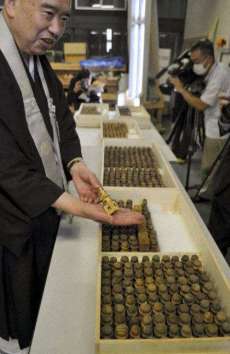
The gorinto are especially popular with the esoteric Shingon school of Buddhism. For adherents of Shingon, the gorinto embodies Dainichi Nyorai (Skt: Mahavairocana), the cosmic Buddha and embodiment of shunyata, or emptiness.The Shingon sect, whose name means “True Word,” can be traced to the Japanese monk Kukai (774–835), who was a civil servant before his time as a monk, wrote voluminously and helped Buddhism overtake Confucianism as the leading religion of Japan.
According to The Mainichi newspaper, the purpose for collecting so many gorinto in one place is unknown, although it may have been to simply accumulate a greater store of merit in the temple.
The report noted that, “Learned monks from Mount Koya, known as hijiri, would undertake pilgrimages to various places carrying the small five-tier towers, and write inscriptions in India ink as requested by patrons. It appears they would then take them back to the mountain.” (The Mainichi)
Today, Buddhism and Shintoism are the primary religions practiced in Japan. They are characterized by a blend of influences, not only from each other, but also from other sources originating from their historical roots, including Buddhism’s past in China and India. Fewer than half of Japanese people identify as active members of a religious group. Nonetheless, a majority of people there take part in traditional Shinto practices on special occasions. And even among families who do not identify as active members of a Buddhist tradition, funerals are often carried out according to Buddhist rites. This apparent mixing and matching of practices is possibly because the Japanese term and concept of religion (Jpn: shukyo) is an invention of the 19th century and does not convey the same meaning in Japanese as it does in English, according to scholar Jason Ananda Josephson.
Part of the gorinto collection will be on display at the Koyasan Reihokan Museum from 20 July.
References
Josephson, Jason Ananda. 2012. The Invention of Religion in Japan. Chicago: The University of Chicago Press.
See more
Buddhist temple on Mt. Koya discovers masses of miniature five-tier towers (The Mainichi)






